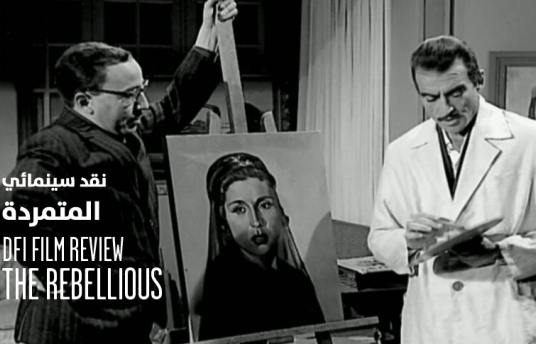DFI Film Review: The Rebellious
Apr 01, 2012

Written by Jad Salfiti, Video Journalist, DFI
Film: The Rebellious
Director: Mahmoud Zulfikar
Stars: Sabah, Ahmed Mazhar
Running time: 100 mins
Mahmoud Zulfikar’s “The Rebellious” (1963) is a light-hearted romantic comedy set in Egypt during the early 1960s. The story follows Sawsan Nashaat (played by Lebanese actress and singer Sabah) the daughter of a multi-millionaire owner of a renowned textiles company producing luxury fabrics and dresses.
The opening scene sees Sawsan speeding through Cairo in a sports car towards her father’s company, reiterating her extravagant lifestyle – flash cars, parties, and glamorous dresses. Sawsan is the apple of her father’s eye – having been born with not so much a silver spoon in her mouth as the whole cutlery set. We soon discover – as a young child – her mother died, cementing her closeness to a father who dotes on and spoils his daughter. Employed at her father’s business is a talented painter called Samy (Ahmed Mazhar) who creates all the fabric prints. A frustrated artist – he yearns for his work to be exhibited for all the public to see. As he dwells over his disappointing career a colleague offers him counsel. He’s told while paintings only hang ignored on the “walls inside houses” his designs decorate “the bodies of millions of women”. Samy is unable to pursue his ambitions because he must care for his poorly, bed-ridden mother who he lives with and cares for.
Sawsan admires Samy’s work and meets him in his studio where he falls hopelessly, helplessly, hilariously in love with her on first sight. We later discover his home is festooned with paintings of Sawsan – the object of his unrequited affections – in shrine-like devotion. A clever inclusion by the director, implying Sawsan lives in a world of fantasy more akin to the paintings she’s rendered in: pretty, vacuous and superficial. In one painting Sawsan is depicted Cleopatra-like as a pharaoh queen: an apt portrayal of the heiress: imperious, demanding and utterly self-involved. She takes no notice of her love-sick admirer belittling him as an instrument to indulge her every whim and fancy.
Fittingly – for a woman immersed in glossy facades – she meets and falls in love with a famous theatre star Kamel . They become romantically involved in a farcical relationship but he is merely using her for the substantial fortune she stands to inherit. He cunningly plots to marry and promptly divorce her within three months. Kamel intends to pursue his own projects with this money. Sawsan’s world is thrown into chaos when her father dies unexpectedly leaving her a recorded message. His dying wish is that she finds happiness in a husband that loves and cares for her as he would. Sawson continues to be involved with Kamel and seeks to test his affections, flattered by the jealousy of a chivalrous lover. To trick Kamel and fire his protectiveness, she tries to pay Samy to pose as her paramour over a hoax dinner in front of Kamel. Samy refuses and is hurt by her disregard of his feelings. But can Sawsan purchase his pride or is destiny aligning their stars for a different fate?
Like much Egyptian cinema of this period, the film has aged surprisingly well, with many comic moments typical of its era. The 1950s and 1960s introduced a new wave of Western-educated Egyptian filmmakers who combined Western technical sheen with classic Arab storytelling. Meticulously directed and styled, the cast are immaculately costumed and the cinematography is executed with flair in a film sure to please everyone.